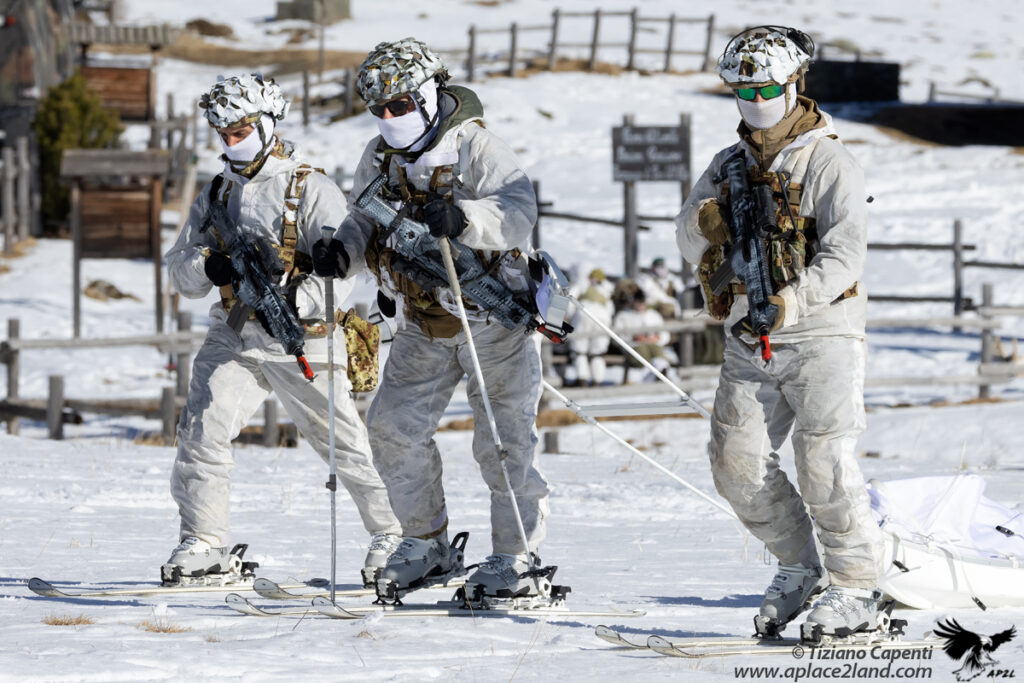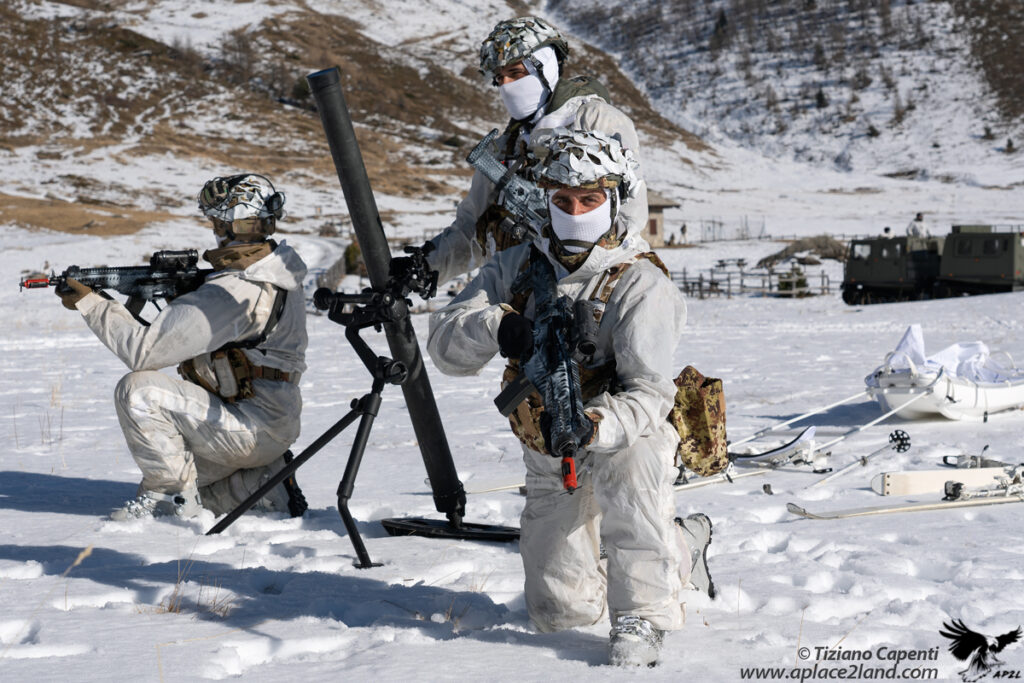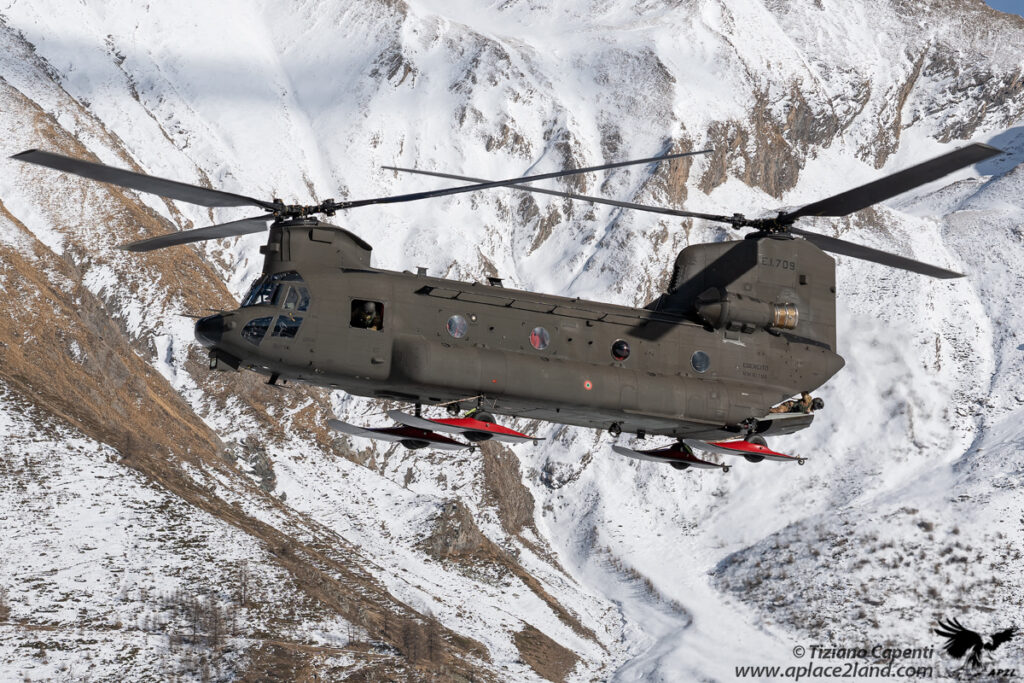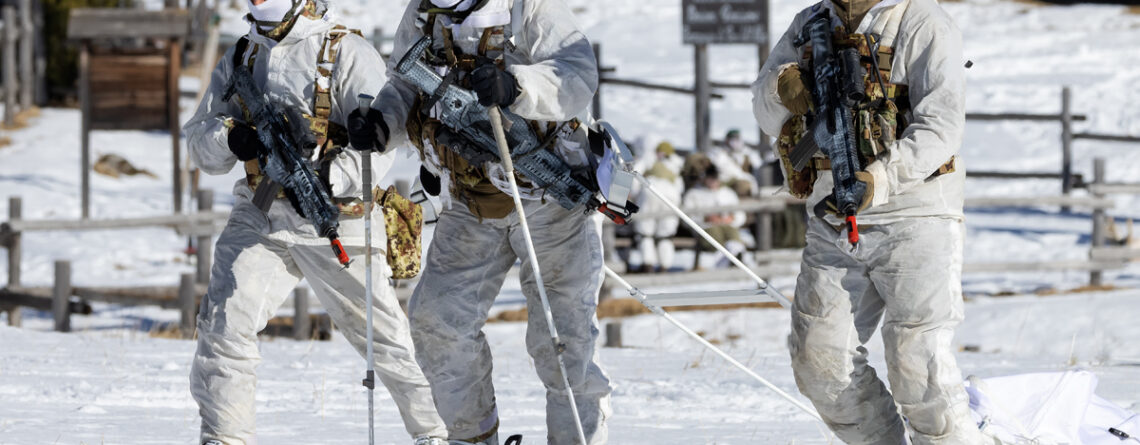Alpine Troops in Action: “White Fox” Exercise in the Snowy Lands of High Val Chisone
The majestic peaks of the Piedmont Alps have become the stage for an extraordinary display of military prowess as Alpine troops advance resolutely on Pian dell’Alpe, in the remote lands of High Val Chisone. In this exercise, nearly 500 Italian Alpine soldiers joined military units from Romania and France to test their capabilities in extreme environmental conditions.
The primary objective of the “White Fox” exercise is to train and prepare military forces to operate effectively in Arctic and sub-Arctic scenarios, environments that are gaining increasing importance in the international geopolitical context. Speaking to us, Brigadier General Massimiliano Fassero, Commander of the Taurinense Alpine Brigade, emphasized the strategic importance of developing specialized units capable of operating in these remote and challenging regions.

Italian Alpini on the move to the objective area. Credit:Commando Truppe Alpine / Aplace2Land
The tactical scenario of this exercise revolved around a platoon-sized enemy presence in a fictitious ‘Greenland’ country, organized in defensive positions in the mountainous terrain of the Pian dell’Alpe / Valchisone area and – apart from standard weaponry – equipped with mortars. The objective given by higher command was to regain domination over the given Area of Operations (AOO) by eliminating the enemy presence.
The operation has been divided into seven distinguished phases:
- Planning and preparation;
- Insertion from Oulx military camp (by vehicles) and initiation of on-foot movement;
- Infiltration into the objective area;
- Movement into, securing, and occupation of assault positions (eyes on target);
- Elimination of enemy resistance and seizure of the given objective;
- On-foot exfiltration;
- Exfiltration (vehicles).
Commander’s intent was to neutralise enemy within the given objective by deploying of two COY-sized elements: one COY as an assault element, second COY as fire support / security element.

Italian Alpini securing perimenter in the objective area. Credit:Commando Truppe Alpine / Aplace2Land
As the highly-restrictive terrain did not allow the use of vehicles, the on-foot movement (phase 1 to phase 4) took 48 hours. The assault itself was initiated on the third day in the early morning hours. The company-sized elements consisted mainly of Italian Alpini and were reinforced by French and Romanian platoon-sized elements. During the assault, Close Air Support (CAS) was in place, utilizing JTAC presence within the COY ORBAT (Order of Battle), as well as coordination of helicopter resupply and transportation by the Italian Army Aviation.

CH-47 supporting assault element. Credit:Commando Truppe Alpine / Aplace2Land
During the exercise, standard troop leading procedures (TLPs) and the NATO Military Decision Making Process (MDMP) were in place. It is also important to mention that the HICON HQ, located in Bousson, utilized the new command and control (C2) system ‘IMPERIO.’ This ambitious multi-domain system enables smooth data communication from the given HQs to the lowest tactical level.
The NATO Mountain Warfare Centre of Excellence (MW COE) participated in the VP 2024 FTX (Field Training Exercise) at the invitation of General Gamba, showcasing the long-term cooperation between NATO MW COE and Italian Alpine units. The NATO MW COE aimed to gather observations in specific areas, namely mountaineering skills, multi-domain environment, utilisation of NATO standards and other guidance’s in place.
These areas of focus aimed to gather insights and lessons learned to improve the training, tactics, and procedures of military units operating in mountainous and extreme weather conditions. By assessing and analysing these specific aspects, the NATO MW COE sought to contribute to the enhancement of capabilities and interoperability among allied forces in mountain warfare scenarios.
In addition to the observations made during the “White Fox” exercise, several key recommendations emerged:
Early Engagement for Event Planning: It is crucial to involve NATO MW COE representatives from the early stages of event planning to ensure the integration of specific topics. This early involvement facilitates a clear understanding of event content and enables tailored inputs, enhancing the potential for mutual cooperation.
Tackling Multi-Domain Issues at Tactical Level: Collaborating with the Italian Alpine Troops presents an opportunity for NATO MW COE to address complex multi-domain environments at the tactical level.
Effective Distribution of Doctrinal Standards: To receive proper feedback, it is essential to ensure the effective distribution of NATO MW standards. While doctrinal documents are a national matter, ensuring broader distribution during exercises can mitigate issues and ensure more comprehensive feedback on existing doctrines.
These recommendations highlight the importance of collaboration, early engagement, and effective distribution of standards for enhancing interoperability and mutual cooperation among allied forces in mountain warfare scenarios. By implementing these recommendations, the NATO MW COE and its partners can further strengthen their capabilities and readiness to address the challenges of modern warfare effectively.


